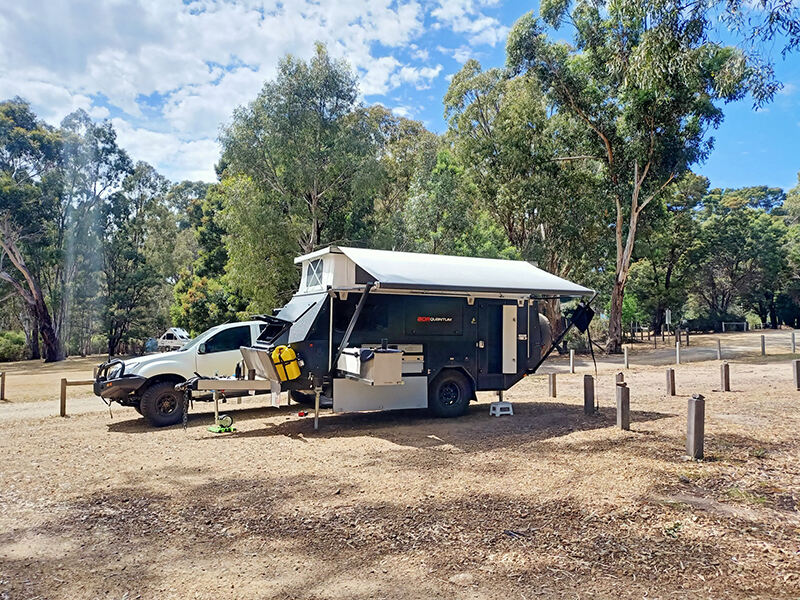An RV awning provides more than the Sun's protection for nomads as it acts as a portable shelter for external activities. Outdoor camping becomes more enjoyable through proper selection and correct installation of your awning setup. A step-by-step guide underlines the approach to create intelligent options.
Buying Guide: Key Considerations
Material and Durability
Buy built with flexible materials that include acrylic with vinyl-coated polyester. UV rays and rain are no threat to these materials as they perform flexible properties against mold growth and both air and UV exposure and disappearance. The combination of rust-proof aluminum or steel frame makes the combination structure for a long time.
Size and compatibility
Take the appropriate dimension of the area where you will mount your RV. The availability of awnings extends from 8 to 20 feet in length, so choosing the shape that matches the dimensions of your vehicle leads to better stability. Verify if your RV contains pre-installed growing holes or a custom-made brackets for the exterior.
Manual vs. Automatic
Budget-conscious buyers prefer manual awnings, yet these products require manual extensions/retraction efforts from their users. The cost increases to a great extent when selecting automated systems that use motors or springs with their features. Choose between easily used awnings depending on the status of your personal trip.
Testing Standards Matter
Products of reputed manufacturers undergo complete tests that guarantee the product reliability. Check for Awnings that pass the test for resistance to vibration, while salt sprays show effective resistance to corrosion for coastal areas, in addition to showing the ability to bear the temperature between -20 ° F to 120 ° F. The endurance tests that repeat many thousands of openings and closing operations serve as an excellent quality indicator.
Establishment tips for success
Pre-establishment
For any signal of damage, clean the pavement of RV when examining its growing surface. Weak spots can compromise stability. It will help you identify solid structural points.
Follow Instructions Precisely
All awning models require specific setup specifications. Symmetric bracket alignment must be combined with snug bolt attachment while avoiding excessive bolt tension because it causes frame deformation. Regularly check electric-powered awning wiring connections in order to prevent electrical problems.
Teamwork and Safety
The installation of an awning by oneself remains dangerous. Features should be kept stable by having someone assist with the fastening tasks. A stabilizing ladder together with gloves helps protect users from potential sharp edges while working.
Post-Installation Checks
Multiple tests should be performed on the awning extension and retraction function. A proper fabric tension distribution prevents the fabric from sagging during windy conditions. Seam protection increases with the application of waterproof spray.
Maintenance for Longevity
During storms along with high wind events pull back the awning.
Clean debris and dirt regularly with mild soap and water.
Annual moving part lubrication helps to stop rust development.
Final Thoughts
An RV awning carefully selected by you will turn your vehicle into an adaptable outdoor living area. Investing in materials of outstanding quality combined with demanding tests together with skilled installation creates both comfortable and safe living conditions. RV campers and van lifers make their life on the road function through the perfect awning which acts as the foundational element of their outdoor adventures.

 EN
EN
 AR
AR HR
HR CS
CS NL
NL FI
FI FR
FR DE
DE EL
EL HI
HI IT
IT JA
JA KO
KO NO
NO PL
PL PT
PT RO
RO RU
RU ES
ES SV
SV TL
TL ID
ID SR
SR SL
SL UK
UK VI
VI SQ
SQ HU
HU MT
MT TH
TH TR
TR MS
MS AZ
AZ KA
KA LO
LO MN
MN MY
MY KK
KK KY
KY

